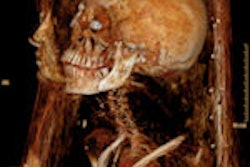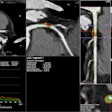Philips Healthcare of Andover, MA, has released the results of a new 3D imaging technology called magnetic particle imaging (MPI).
The technology, which utilizes the magnetic properties of iron-oxide nanoparticles injected into the bloodstream, was used in a preclinical study to generate real-time images of arterial blood flow and volumetric heart motion.
Philips projects MPI as a beneficial imaging tool in the diagnosis of and therapy planning for diseases such as heart disease, stroke, and cancer.
The preclinical study, titled "Three-dimensional real-time in vivo magnetic particle imaging," was published in issue 54 of Physics in Medicine and Biology.
MPI uses the magnetic properties of the injected iron-oxide nanoparticles to measure the nanoparticle concentration in the blood. Because the human body contains no naturally occurring magnetic materials visible to MPI, there is no background signal. After injection, the nanoparticles therefore appear as bright signals in the images, from which nanoparticle concentrations can be calculated.
By combining high spatial resolution with image acquisition times as short as 1/50th of a second, MPI is designed to capture dynamic concentration changes as the nanoparticles travel through the bloodstream.
Related Reading
Philips installs Ambient MR at VA hospital, February 19, 2009
Philips wins Brilliance iCT installs, February 10, 2009
Philips CT images Egyptian mummy, February 5, 2009
Philips joins SonoDrugs project, January 29, 2009
Philips debuts new ultrasound scanner, January 26, 2009
Copyright © 2009 AuntMinnie.com



















